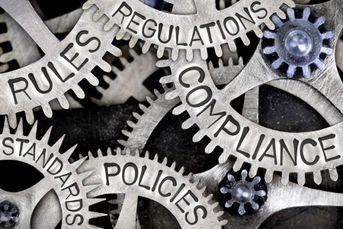Are you applying the standard of care required for your clients?

It pays to understand any governance structures already in place to ensure they meet expectations for every type of client.
“Managing” is essentially the act of making decisions. Sound decision-making is a process that requires preparation. You must be well-organized before you can start taking effective action. This is particularly true for managing the fiduciary process, where there are many moving parts and so much is at stake.
As an adviser, you play a significant role in setting the tone for decision-making. Even though you’ve ostensibly been hired to help analyze and choose investments, your real role is to help manage a process. And the prudent first steps are to take stock of the operations and people that are already in place and ensure that everyone is on the same page as you move forward.
It goes without saying that advisers are expected to understand and follow a myriad of laws and regulations associated with governing the investment program and their services. As an adviser who has likely undergone licensing requirements and firm-level training related to your area of practice, you should have a working understanding of the standard of care required for most of your clients. But this piece shouldn’t be taken for granted.
The amount of liability you and other fiduciaries may be subject to can vary significantly. It pays to understand any governance structures already in place to ensure they meet expectations for that type of client. If you do encounter any out-of-the-ordinary governance provisions, legal counsel should be engaged for an opinion on their impact and any unintended consequences.
PROPER DOCUMENTATION
Of course, a governance structure only exists as much as it is documented. A best case scenario is that the client will have the governing documents centrally located and organized. But that isn’t always the case. Documentation can become sloppy over time if not carefully managed. In some cases, critical documents may not even exist.
If one is not already in place, one of the first steps a fiduciary should undertake is to compile a file of any documentation that defines the fiduciary process. This fiduciary file will be the definitive source of information regarding investment decision-making. Documents to be included in the file include: trust documents, custodial and/or brokerage statements, investment performance reports, service agreements, the investment policy statement, due diligence files on funds and other investment managers, and monitoring procedures for funds and other investment managers.
In addition to the documents, the people are the other major component to the fiduciary process that might not be organized. It is not uncommon for various stewards (such as trustees and investment committee members) to be unaware of the extent of their responsibility and for service provider relationships to be disorganized and under supervised. One way to manage this is to carefully document each party’s role and to have those individuals sign off on those roles. This also allows the primary decision-makers to evaluate the completeness to which all responsibilities are being met. If any gaps exist, they are likely to be uncovered during such an exercise.
CONFLICTS OF INTEREST
When dealing with people and money, the potential for conflicts of interest always exist. In keeping with the duty of loyalty at the core of any fiduciary relationship, there should be clearly defined policies and procedures related to how to address conflicts. While the best case is to avoid them entirely, it isn’t always feasible. When conflicts do exist, the best practice is to document them and to explain how they are being managed in the best interest of the client.
Finally, when assets are being entrusted into the hands of others, minimum protections should be put in place to protect those assets from theft, embezzlement and fraud. Traditionally, this includes favoring investments that are regulated in the U.S. or other well-established authorities and having the appropriate insurance and bonds. Increasingly, cybersecurity is also becoming a risk that must be taken seriously, both for the protection of assets and of sensitive data that can be exploited.
This article is merely a primer on the major areas that should be explored. Within each area, there is a level of detail that is likely to be specific to the situation and require deeper consideration. But by understanding critical areas where preparation for sound decision-making is needed, the process of organizing will become more efficient and identifying areas for concern will become more instinctive.
Blaine F. Aikin is chief executive of fi360 Inc.
Learn more about reprints and licensing for this article.







